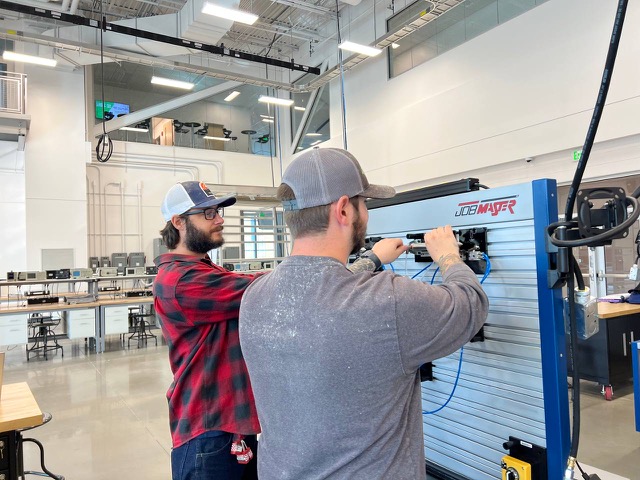Cleveland Community College (CCC) is situated in a vibrant region of North Carolina. There, the advanced manufacturing, aerospace and automotive industries are growing rapidly. Our mission is to drive student success and to make a strong economic impact on the community through diverse education and training opportunities. For more than 50 years, we’ve helped students earn diplomas, degrees or certificates, or learn the trades.
Over time, it became clear that as our local business community grew, we needed to develop high-quality career and technical education (CTE) programs in manufacturing. The employers needed prospective employees who possessed basic technical skills. So, to fill this identified educational gap, leaders from area manufacturers met with CCC faculty to discuss creating pro.grams that would benefit students, the college and the companies. We took six steps to achieve that goal.
1. Involve local businesses.
Cleveland Community College has an industry advisory board that includes representatives from local manufacturing firms. These companies partner with the college to develop meaningful training, which al.lows graduates to move immediately into careers in the community. The advisory board suggested that CCC teach programmable logic controllers (PLCs). Because they can be integrated into a variety of industrial applications. For example, PLC courses teach students how to program for use in manufacturing applications, such as electro-pneumatics or controlled hydraulic systems.
2. Choose a learning platform that aligns with your goals.
Working with Carl Latini at Learning Labs, we reviewed several platforms that would allow us to teach students multiple topics (e.g., hydraulics and pneumatics) in one system that could culminate in a capstone project. We implemented Intelitek’s PLC courseware and labs — a solution that pro.vides students with a solid grasp of industrial PLCs, ladder logic programming, input and output devices, and electrical control. Using the platform, students learn to pro.gram a PLC and simulate applications that require electrical control.
3. Emphasize hands-on learning.
We’re also using the same company’s industrial maintenance training, which teaches mechatronics and industrial maintenance. While there is some classroom lecture and theory, the training course is mostly hands-on. Students learn most material while working on the platform itself.
4. Embed new skills into existing programs.
The PLC curriculum is embedded in automation, engineering and industrial systems programs. The automation program requires the first two PLC courses. And there are four PLC courses in the engineering program, so basically one per semester for two years.
5. Create career pathways.
Many students receive job offers before graduation, from companies they’ve interned with. The workplace employs them for an internship, and they get college credit for working there. Those companies may then offer them full-time jobs.
6. Ask your local business partners what they want.
Being able to match CTE programs to the needs of the local manufacturers was a key factor in our programs’ success. Were not teaching students how to be experts on specific equipment. We’re giving them a base of knowledge that will get them in the door. From there, the employers will train their new hires.
We now feel well prepared to train as many students as local employers need. Our team is committed to educating the next generation of manufacturing industry leaders.
Donna Moore is an automation instructor at Cleveland Community College.
Water Spurling is an industrial systems instructor at Cleveland Community College.








